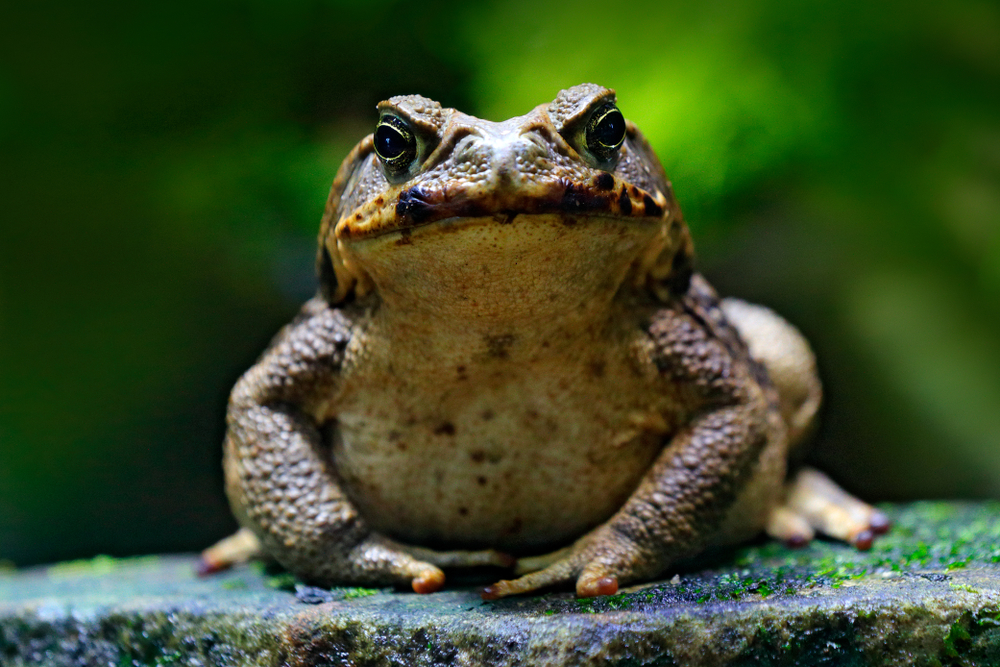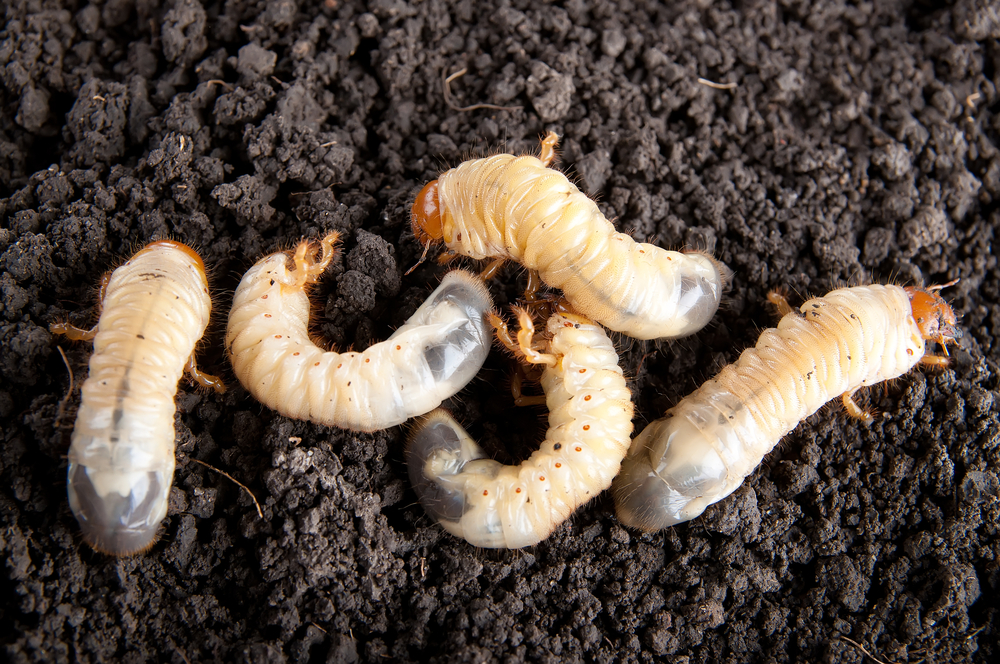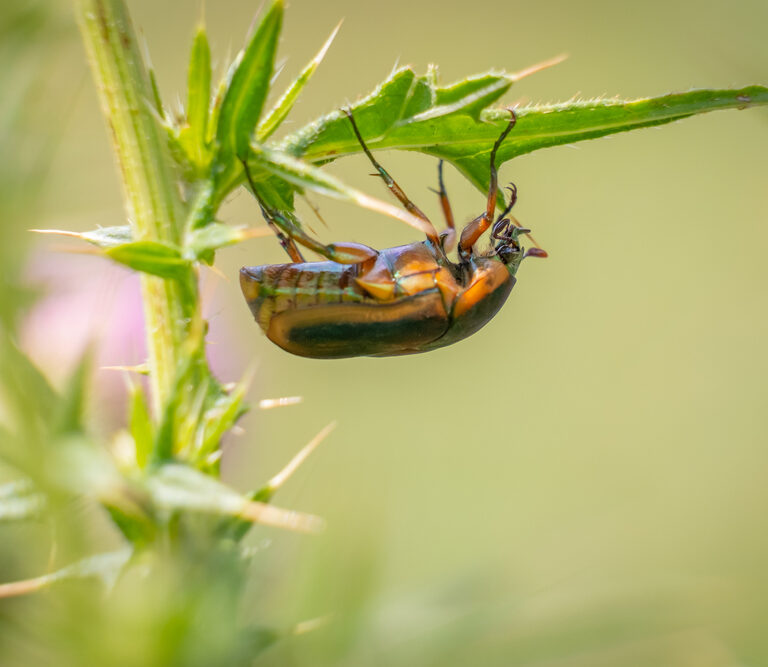No other bug is as crazy and unpredictable as the June bug. In summer, during their peak season, it seems as if they want to hit our faces constantly. Thankfully, besides being annoying, they’re completely harmless to humans. Yet, their presence represents a real problem to gardens and farms across the United States.
There are more than 400 species of June bugs, also known as May bugs. They’re generally the most active during late spring and summer. Outside of those months, it’s their larvae, also known as grubs, that you need to worry about. Whether your livelihood is in danger or you just find them plain annoying, there’s no need to worry. Here, you’ll find information to get rid of both adults and larvae.
Examine the Situation
You’ll have to use different methods depending on the extent of the infestation. The same goes if you’re dealing with adult June bugs or their larvae. For example, for small gardens and yards, attracting predators may be the best option.
Farms or larger operations may want to use natural insecticides to protect the crops. They’re such a widespread issue that you can find many ways to get rid of them.
Best Ways to Get Rid of June Bugs
1. Overnight Trap
What You’ll Need:
- Molasses
- Hot water
- Large jar
- Digging tool
If adult June bug numbers seem to get bigger and bigger, traps are your best bet. These traps work better when you set them up along the perimeter of your property. This way you can make sure they are attracted away from your house. To create a simple yet effective trap, follow these steps:
How to Make a June Bug Trap:
- Fill various large jars halfway with molasses, then fill a third of it with hot water. Seal the cap and give it a good shake until it is thoroughly mixed. The number of jars depends on the size of your property, but three to four should considerably decimate their numbers.
- Use a small shovel to make small holes around the perimeter of your property to put the jars in. Make sure to set them at least 30 feet away from your house. You don’t want the June bugs to linger around your place. The hole should be deep enough for the jars to fit, but the opening at the top should still be above the ground.
- Put the jars inside the holes and fill the outside edges with dirt until only the caps are visible. Then, take the caps off of the jars and leave them.
- Check the jars every day. Empty the contents every time they fill up with bugs and get them ready again. You can use a strainer to separate the dead bugs from the molasses, allowing you to reuse the mix.
2. Nematodes
What You’ll Need:
- Nematodes
- Water
- A bucket
- A watering can or a backpack sprayer
Let me introduce you to nematodes, your new best friends. This is the perfect solution to deal with June bug larvae. If you’re concerned about using heavy-duty chemicals in the soil, then this is the solution.
Nematodes are helpful living microorganisms that infect insects with lethal bacteria. They’re not harmful to earthworms, animals, or humans. There are many types of nematodes, but the most effective ones to deal with grubs are called Heterohabditis bacteriophora, which should be stated on the product’s label.
You can buy them at a garden store or online. You can apply them as if you’re using any other kind of insecticide.
High concentrations of nitrogen affect the development of nematodes. Make sure you don’t use fertilizers two weeks prior or two weeks after spraying them in your field or garden. Grubs spend their whole lives a couple of inches underground, but it’s easy to tell where they’re concentrated. Look for brown patches of grass or foliage that look like water damage.
How to Use Nematodes:
- If your soil is dry, apply water first to generate a friendly environment for the nematodes.
- Read the product’s label to make sure you have everything you need. Pour the contents of the product into a bucket of water and let it sit there for a couple of minutes.
- Slowly stir the liquid to get rid of any clumps.
- For a small garden, a watering can is the best option, but for large operations, it’s better to use a backpack sprayer. Fill up the watering can or backpack sprayer with the liquid. For backpack sprayers, make sure the pressure setting is high and the nozzle opening is at least 0.5 mm wide to avoid blocks.
- Start evenly spraying the affected area. Make sure to stir the tank often to avoid the nematodes sinking to the bottom of the backpack sprayer.
- After the application, make sure the soil is moist for the next two weeks. This allows the nematodes to assimilate easier.
3. Attracting Predators

What You’ll Need:
- Shallow containers
- Fresh water
- Shovel (or another digging tool)
- Plant pots
- Stones
There are predators that you want to attract and those you don’t. Frogs and toads are the ones that would be the most beneficial to control June bugs. These animals feed on any bug that exists to terrorize you and your garden. They’re the SEAL Team Six of the insect-eating world.
The key to attracting beneficial predators is to foster a friendly environment for them. Start by limiting the use of heavy-duty pesticides on your property. Certain insecticides may poison our long-tongued friends. For the best results, consider using organic gardening techniques, including crop rotation.
Besides food, two things will make toads and frogs feel right at home – water and shelter. Dig several small, three-to-four-inch holes along the garden. In each hole, put an upside-down plant pot but leave some room for them to get in and out. These are nocturnal animals, so offering protection from sunlight goes a long way in making them comfortable.
Now that you have sheltered them, you have to take care of their water supply. Frogs and toads don’t drink through their mouths but rather absorb water through their skin. Set up a few shallow containers and fill them with fresh water so they can hydrate. Congratulations, your garden is now a frog spa.
If you own pets, be careful about attracting frogs and toads. To protect themselves, these animals can produce dangerous secretions that can affect your pets.
4. Insecticides
Commercial insecticides are one of the best solutions to take care of adult June bugs. However, if you have a farm, be careful about any chemicals that may compromise your crops.
Heavy-duty chemicals could make them dangerous for human consumption. Always follow the product’s instructions, often located on the label. Keep in mind, these products also kill beneficial bugs and wildlife, so be careful about their application.
How to Identify June Bugs and Their Larvae

June bugs and grubs look nothing alike. Grubs living underground for most of their cycle is a good thing because they are, in fact, quite unpleasant. At least grubs make for excellent fishing bait. Identifying June bugs is quite easy as they seem to always get on our faces in the summertime. They’re most active in the evening and love light sources.
Grubs look like white, c-shaped worms that crawl beneath the soil. They are more damaging to plants than adult June bugs. These insects are constantly chewing on the roots of plants. Grubs also attract unwanted animals like raccoons and foxes that dig holes in the ground looking for them. This can completely ruin gardens and lawns.
How to Prevent June Bugs Infestations
Large infestations don’t suddenly happen. Places where large numbers appear tend to have records of it. Knowing the history of June bug damage in the area goes a long way in preventing it. Areas where a larger population of June bags gather are of course subjected to more damage.
If the infestation is not serious enough, consider proper fertilization of the ground, irrigating plants, and crop rotation. The best solution is taking good care of your garden.
When Is the Best Time to Apply Insecticides?
There’s one new generation of June bugs every year, but adults live up to four years, meaning sometimes generations can overlap with each other. Grubs hatch and remain underground from fall through spring, which is the best time to use products that target them.
Adults are the most active during May, when they’re on the lookout for females who lay their eggs in the ground, repeating the process. If you decide to target the adults then early summer is the best time to reduce the extent of their infestation.
Final Thoughts
June Bugs tend to be more annoying than they are destructive. Yet, nature is unpredictable. When their numbers are large enough, they can become a serious threat to gardens and farms.
Rest assured that good planning and proper nurturing of your garden will prevail over any damage these bugs may cause.
